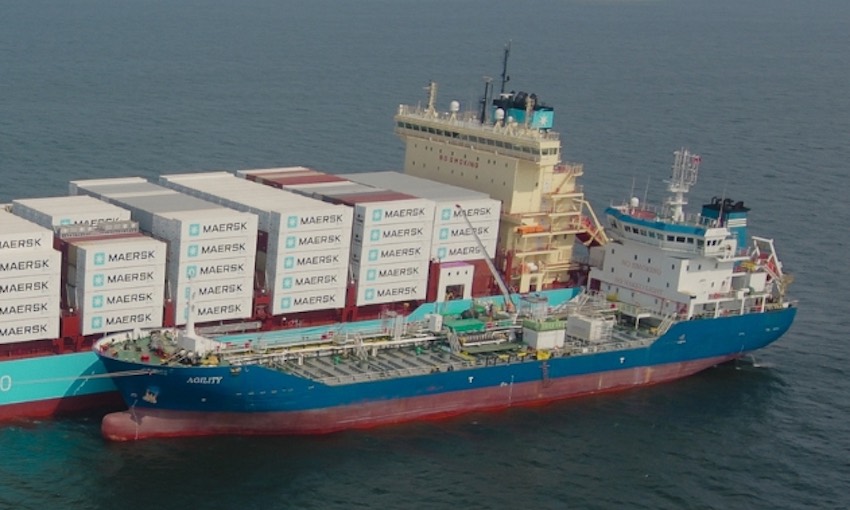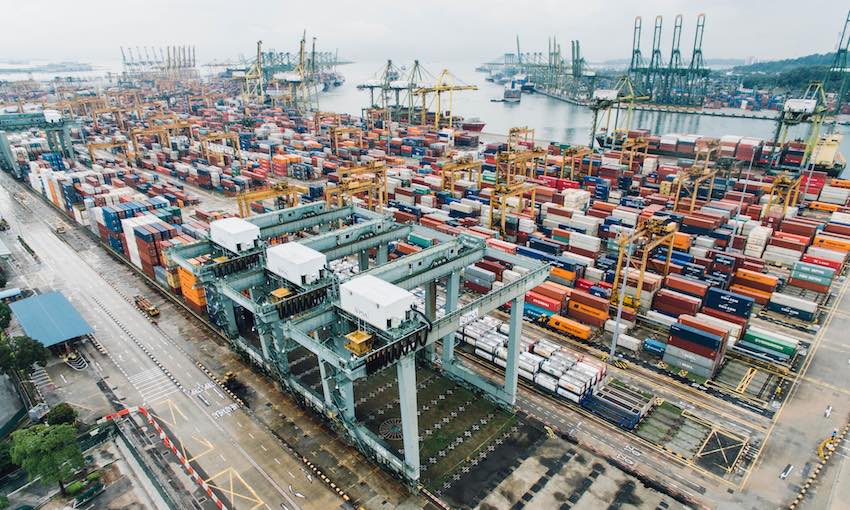A BUNKERING operation involving Maersk’s new methanol containership was a first for the company and for Singapore.
Maersk took delivery of its first containership able to run on green methanol earlier this month. The vessel called Singapore on its maiden voyage to Copenhagen, where it will be named.
Maersk, Singaporean bunker craft operator Hong Lam Marine, the Maritime and Port Authority of Singapore (MPA), government agencies and research institutes were involved in the operation.
MPA said the ship was refuelled with around 300 tonnes of bio-methanol via Hong Lam Marine’s Singapore-flagged tanker MT Agility at the Raffles Reserved Anchorage.
MPA said it worked with more than 28 agencies, partners and institutes to prepare for the methanol bunkering operation.
“The success of the methanol bunkering operation is a result of nearly a year’s preparations with various government agencies, research institutes, international collaborators, and industry to develop rigorous safety procedures through in-depth operational and risk assessments, modelling, and validation,” MPA chief executive Teo Eng Dih said.
“This operation will help inform the development of the various standards, including the technical reference for methanol bunkering operations in Singapore, and guide our approach for future pilots and trials of new marine fuels.
“We thank A.P. Moller-Maersk, Hong Lam Marine, American Bureau of Shipping, Mitsui & Co, OCI Global, Stellar Shipmanagement and Vopak for their joint efforts with Singapore-based agencies in operationalising methanol bunkering capability and we welcome partners to work with us to accelerate maritime decarbonisation.”
Morten Bo Christensen, head of energy transition at Maersk, said the company was excited to collaborate with others on the ship’s maiden voyage.
“This journey is an important step in our efforts to reach net zero greenhouse gas emissions by 2040, as it will allow us to gain the necessary operational experience to operate the new engines and the fuel provided by OCI Global ahead of the arrival of our larger methanol-enabled vessels in the coming years.”
MPA organised table-top exercises, workshops and ground deployment exercises. Exercises sought to identify safety measures and define roles and responsibilities for a cross-agency response in the event of a methanol incident at sea.
The port authority also assessed risk and environmental impacts ahead of the operation. MPA staff and Hong Lam Marine crewmembers were also involved in a methanol firefighting program.
MPA is now developing a technical reference for methanol bunkering that would cover refuelling requirements, operational and safety requirements for delivery of methanol from a bunker tanker to receiving vessels, and crew training and competency.
It intends to develop other operational and safety protocols, training for seafarers and studies of infrastructure needs.
MPA also plans to present its learnings to the International Maritime Organization later this year to support the safe adoption of methanol as a marine fuel.





